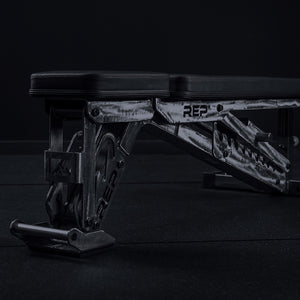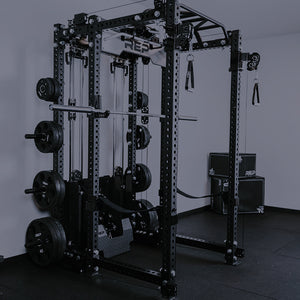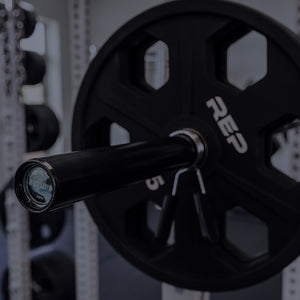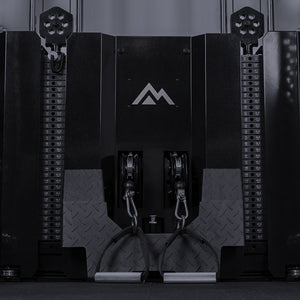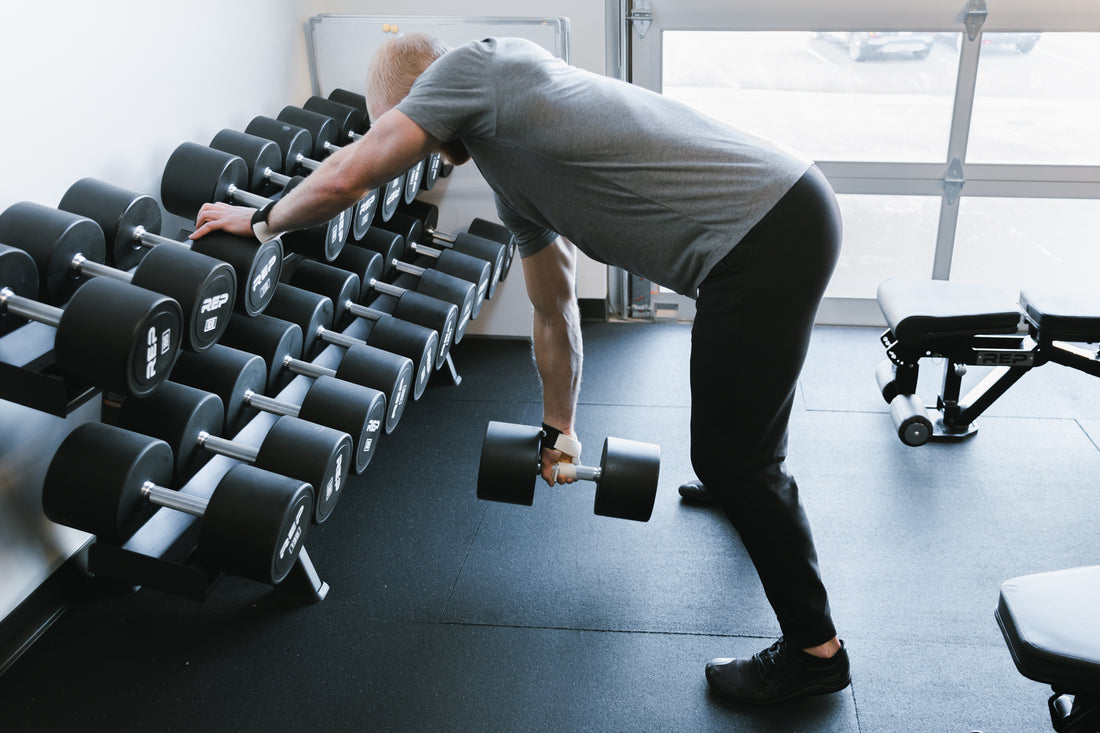
Much like barbell rows, the dumbbell row is an established staple for back workouts.
They both work as powerhouse movements to build bigger, stronger backs. Where the dumbbell differs is in its isolation of working one side at a time. This helps stabilize each side, as well as correcting any imbalance of strength between the left and right.
Dumbbell rows are also easier on the lower back due to the tripodal position of the body.
What muscles do dumbbell rows work?
When you row a dumbbell properly, you’re engaging your entire backpack of muscles.
Latissimus Dorsi (your “lats” or gym rat slang, your “wings”) are the largest muscles of your back that flare out on your sides.
Trapezius (your “traps”) are the muscles most commonly recognized between your shoulders and your neck, but they also run down parallel to your spine, building the columns of muscle in the middle of your back.
Rhomboids. These lesser-known muscles help control your shoulder blade movement.
Rear delts (the backs of your shoulders), which pull your arms back.
Lower back. Arguably the most precious and important muscle to focus on in your body. A great rule of thumb in the gym is to keep your lower back arched during every single exercise, or to say it a different way, keep your spine neutral. There are a random few moments where you’ll be instructed to round your lower back, but until strictly told to do so, keep your spine straight from lower back to head.
Biceps. The pulling muscles of your upper arms.
Forearms. The muscles of your forearms are often overlooked when you think about pulling exercises, but the development of your grip will help immensely with all pulling exercises, as well as most movements in the gym.
How to do dumbbell rows
The most common method of dumbbell rows is doing them one-handed -- one side at a time. To execute a proper dumbbell row, all you need is a dumbbell and a bench. With those two simple tools in tow, let’s get rowing!
Here’s how to properly do dumbbell rows:
* Stand perpendicular to the bench with your feet approximately shoulder-width apart. A common mistake here is to stand parallel to the bench and place one knee on it while you row. The reason we want to avoid this is that it unevenly loads the pelvis and hips, creating an uneven distribution of pressure and angular strain. Instead, standing perpendicular to the bench keeps everything even in your hips and pelvis, allowing you to safely focus on your back.
* Place one hand on the bench to stabilize yourself, making sure to keep your shoulders higher than your hips. This ensures that your rows will target your upper back muscles and not shift the strain to your lower back. Start with the bench flat but raise it a notch or two if it helps keep your shoulders above your hips.
* Make sure you keep your spine neutral from the first rep to the last. This means don't look up, arching your head back, but keep your spine straight from your lower back all the way through your head. Wherever your torso faces, you face. This keeps your back tight in proper position.
* Grab the dumbbell with your other hand, and without shifting your hips or lower back, pull the dumbbell straight up, squeezing your lat at the top of the lift.
* Control the negative motion, stretching your arm and lat to full extension at the bottom of the lift.
* Repeat until that side is done and then replicate the same steps with your other arm.
* Bonus pro tip: Whenever performing an exercise where you lift one side at a time, always start with your non-dominant/weaker arm. The reason for this advice is that if you start with your dominant/stronger arm, you risk either lifting a weight too heavy for your weaker arm or performing more reps than the weaker arm can match.
Over time, this creates an imbalance between your left and right sides. Instead, do the non-dominant/weaker side first so that the dominant/stronger side can match efforts, and over time, create a better balance of strength.
Bilateral Bent-Over Dumbbell Rows

The other method of dumbbell rowing is similar to a barbell row with dumbbells. Both arms still have to fend for themselves without a bar connecting them, but they work simultaneously. Your lower back will have to work harder to balance the weight since one arm is not supporting you like a human tripod.
A good reason to opt for dumbbells over barbell is if your shoulders, elbows, or wrists feel discomfort or pain with a bar. Sometimes allowing independent movement can help work around joint challenges and give you a more customizable option.
Here’s how to do a dumbbell row bilaterally:
* Start with your foot placement, standing approximately shoulder-width. If you feel imbalanced, adjust narrower or wider until you find a firm foundation with your bodyweight in your heels.
* Grab the dumbbells.Try overhand grip, similar to how you’d hold a barbell -- although the priority is on pinching your shoulder blades together. This will customize your wrist angle to what is optimal for your body. Stand up with the weight to ensure you have control before moving into position.
* Push back with your hips, allowing your knees to bend a little until your thighs and torso are both at 45 degrees or until the dumbbells are below your knees. Think of yourself as a glorified scissor lift.
* Arch your lower back. Don't allow it to round. If this is difficult, lower the weight and practice your form until you can keep a straight, unified back from top to bottom. Straight from lower back to head!
* Starting with your arms fully extended, squeeze your lats and shoulder blades, pulling the dumbbells up into your stomach in a straight line. Do not roll your shoulders or rock with your hips. If it looks like a dance move, you should probably lower the weight until you can control it.
* Control the negative by lowering the weight to full extension. Don’t drop the weight, both for safety and because you’ll be robbing yourself of some of the best gains.
* Once you have completed your set, return the weight to a rack or the ground, and voila, your backpack of muscle is being built!
Now go get to rowing and build up that back!
Learn More
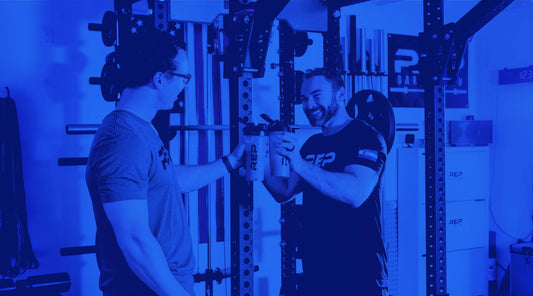
NEWSLETTER SIGNUP
Product launch information, promotions, blogs, and REP news.

